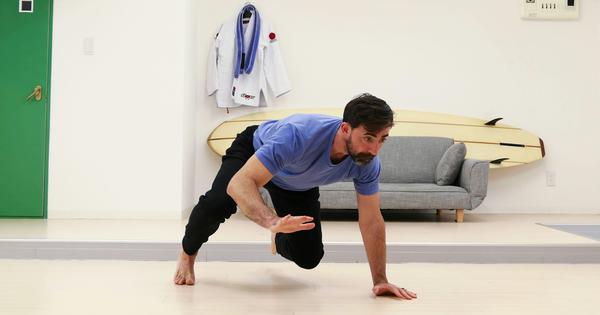Exploring the fitness trend of quadrobics: benefits, risks, and the role of social media.
Quadrobics, a movement-based practice that involves crawling and leaping on all fours, has recently gained traction on social media platforms. Advocates of this trend assert that it enhances fitness, strength, mobility, and even offers a spiritual connection to nature and one’s primal self. The term itself is derived from the Latin word ‘quattuor’, meaning four, combined with ‘aerobics’, which refers to rhythmic and repetitive exercises engaging large muscle groups.
The concept of quadrobics first gained widespread attention in 2008, when Japanese sprinter Kenichi Ito set a Guinness World Record by sprinting 100 meters on all fours. This event marked the beginning of a series of records, culminating in recent achievements by American Collin McClure and Japanese Ryusei Yonee, who showcased impressive sprinting times while employing this unique mode of movement.
As the trend evolves, a significant number of young social media users have begun sharing their own quadrobics videos, contributing to its popularity. In some regions, particularly Russia, subcultures of ‘quadrobers’ have emerged, blending quadrobics with costume play. Participants often crawl outdoors while wearing animal masks, and this phenomenon has drawn attention from various communities, including the therian community, where individuals identify as non-human animals.
Despite its rising popularity, quadrobics has faced criticism and scrutiny. In some countries, concerns have been raised regarding the implications of such movements, with political and religious figures expressing alarm over young people engaging in this practice. For instance, the Uzbek Interior Ministry has warned parents that involvement in quadrobics may be perceived as neglect. Similarly, Russian politician Vyacheslav Volodin has attributed the trend to Western influences, framing it as part of a broader ‘dehumanisation project.’
From a fitness perspective, quadrobics presents a mixed bag. While the movements can promote balance, flexibility, and core stability, scientific studies have not yet definitively assessed its long-term benefits or risks. The practice aligns with a wider trend toward ‘ancestral’ or ‘primal’ wellness, which includes various dietary and exercise regimens aimed at reconnecting individuals with their natural roots. However, the effectiveness of quadrobics compared to traditional forms of exercise remains uncertain.
Enthusiasts often highlight its ability to engage major muscle groups and improve coordination. Nonetheless, the reliance on body weight for resistance may limit its effectiveness in building strength and bone density when compared to weightlifting. Although quadrobics can elevate heart rates, it requires considerable skill, making sustained and intense practice challenging. Additionally, like any exercise, it carries some risk of injury, particularly for joints and muscles that may not be accustomed to such movement.
In conclusion, while quadrobics offers an intriguing blend of movement and entertainment, the evidence supporting its superiority over conventional exercise methods is limited. It appears to serve more as a supplement to established training rather than a standalone solution. The trend’s social media success is less about its scientific merit and more about its visual appeal, engaging audiences through a captivating blend of fitness, performance, and identity.








